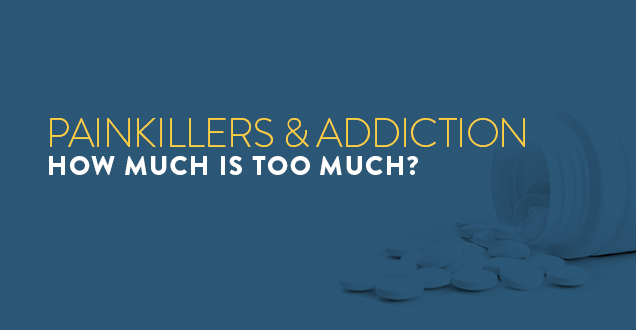
According to Consumer Reports, about 45 people a day—more than 16,000 people a year—die from an overdose of opioids, which include the drugs methadone, morphine, oxycodone and hydrocodone. Despite that number, in the last ten years, prescriptions for these drugs have climbed 300 percent.
And the statistics are startling:
- One in five Americans report misusing a prescription drug at least once in their lifetime.
- Teen drug abuse with [prescription painkillers] is now second only to marijuana in popularity.
- Almost one in 10 high schools seniors report taking Vicodin within the past year.
Where do these students get these painkillers? Their parents, of course. Painkillers are the most-prescribed drug of this decade. And, unfortunately, painkiller addiction is on the rise.
How Does One Become Addicted to Painkillers?
With all the knowledge swirling around about how easy it is to become addicted to painkillers, how is it that there are still one in five Americans who misuse them? There is no single answer to this question as everyone’s situation is different. However, for some individuals, it depends on genetics.
Everyone’s heard of the term “addictive personality,” and that holds true for painkiller addiction. Andrew Saxon, professor of psychiatry and director of the addiction psychiatry residency program at the University of Washington, said in an interview with WebMD that those who have an addictive personality have a different chemical makeup in their brains from others.
When these individuals take their painkiller medication, like most people, they receive a pleasurable rush in their brains. However, once they feel that initial release, their brains want more. The more often these individuals are prescribed these drugs and the longer they take them, the more they want it—creating a vicious cycle.
How to Lower the Potential for Addiction
There are ways to use painkillers safely and properly, lessening the chance of dependency. Instead of long-acting medications, opt for the short-acting versions instead. The long-acting medications tend to be more than your body might need and have a higher chance of being stolen or abused.
When taking pain medication, be sure to monitor everything else you’re putting into your body. If you’re taking pain medication, it’s highly recommended that you skip the alcoholic beverages. When mixed with the medication, it affects your central nervous system and could even lead to overdose. You may also become addicted to the fuzzy-headedness and euphoric feeling of the combination.
If you have chronic pain, examine other prescription medications that may work better than painkillers. There is less of a chance for dependency taking acetaminophen, ibuprofen or naproxen—particularly for those who suffer from fibromyalgia and other nerve pain. There are also other ways to find relief for chronic pain that include more natural, non-habit-forming remedies, including staying physically active, getting routine massages, and cutting back on alcohol and other foods that cause inflammation. Painkillers are meant to alleviate short-term pain, such as a broken bone or after surgery—not taken for an extended time.
Additionally, when you’re prescribed painkillers, read the label carefully and follow directions completely. If you have sleep problems, let your doctor know about it before any painkillers are prescribed. They could make your sleep problems worse; if you have sleep apnea, it could even be fatal.
It’s also important to be up front with your doctor and ask him or her how you will be monitored if you are expected to take the medication long-term. To prevent others from becoming dependent on painkillers, keep the medication locked up safe, away from children and others who would use them for “recreational purposes.”
Widespread Prevention
Even though there are tighter regulations put forth by the Food and Drug Administration (FDA), it still doesn’t seem to do the trick in preventing people from not taking these medications properly—leading to addiction and overdose. These regulations, though inconvenient for the customers, require a written prescription presented in person at the pharmacy. Individuals also cannot get refills called in, and must once again present another prescription to the pharmacist.
These steps, presumably, are the beginning of a long battle between the health care system and trying to curb painkiller abuse. This encourages doctors to more closely focus on their patients’ well being and avoid addiction.



